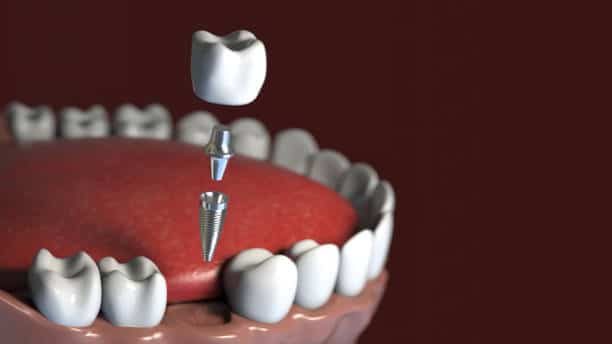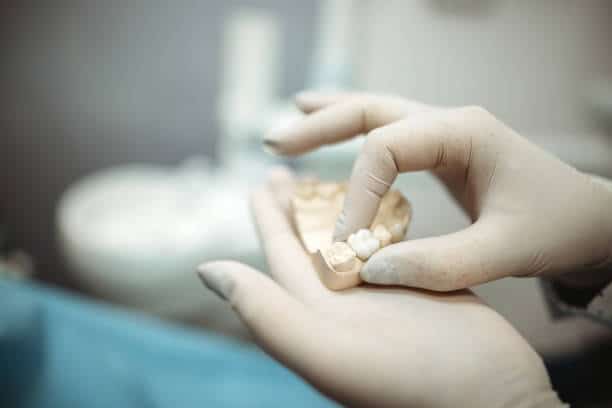Single Tooth Implant: A Comprehensive Guide to Restoration
Single tooth implants have been revolutionizing the field of restorative dentistry for decades, providing a more permanent and natural solution for missing teeth. This innovative procedure involves replacing a single missing tooth with a titanium implant that fuses with the jawbone, creating a sturdy foundation for a custom-made crown to be placed on top. Not only do single tooth implants improve the appearance of a smile, but they also restore function, allowing for proper chewing and speaking. With the increasing demand for aesthetic and functional dental solutions, it is important to understand the comprehensive process of single tooth implants and their benefits.
In this comprehensive guide, we will delve into the various aspects of single tooth implants – from the initial consultation to the final restoration – to provide readers with a deeper understanding of this remarkable procedure. We will also discuss the different types of single tooth implants, their success rates, and potential complications, along with the aftercare and maintenance required to ensure long-term success. Join us as we explore the world of single tooth implants and discover why they are becoming the preferred choice for restoring missing teeth. For better guidance consult our Dentist Plano .
Understanding the benefits of single tooth implants
A single tooth implant is a highly effective and reliable solution for restoring a missing tooth. With advancements in dental technology and techniques, dental implants have become the gold standard for tooth replacement. Not only do they look and feel like natural teeth, but they also offer a range of benefits that make them an ideal choice for many patients. One of the primary advantages of a single tooth implant is its ability to preserve the integrity of the surrounding teeth. Unlike traditional bridges that rely on neighboring teeth for support, an implant is a standalone restoration that does not require any alteration of adjacent healthy teeth. This not only helps maintain the overall oral health but also ensures long-term stability and durability of the implant.
Additionally, single tooth implants provide excellent functionality, allowing individuals to eat, speak, and smile with confidence. The integration of the implant with the jawbone provides a secure foundation, preventing any slippage or discomfort that is often associated with dentures or removable bridges. Another significant benefit of single tooth implants is their ability to stimulate the jawbone, preventing bone loss and preserving facial structure. This helps maintain a youthful appearance and prevents the sunken-in or collapsed look that can occur with missing teeth. Overall, understanding the benefits of single tooth implants can lead to informed decision-making and a restored smile that is not only aesthetically pleasing but also functional and long-lasting.
Factors to consider before restoration
Before undergoing a restoration procedure for a single tooth implant, there are several important factors to consider. Firstly, the overall health and condition of the patient’s jawbone should be evaluated. Sufficient bone density is necessary to support the implant and ensure its long-term success. If there is inadequate bone volume, bone grafting may be required prior to implant placement. Additionally, the patient’s oral hygiene habits and commitment to maintaining good oral health play a crucial role in the success of the restoration. Proper oral hygiene practices, regular dental check-ups, and a healthy lifestyle contribute to the longevity of the implant. Moreover, the patient’s occlusion and bite alignment should be assessed to ensure proper function and prevent any undue stress on the implant. Finally, it is essential to have open communication with the dental professional, discussing expectations, potential risks, and alternative treatment options available. By considering these factors, patients can make informed decisions and achieve optimal results with their single tooth implant restoration.
The step-by-step implant process explained

The step-by-step implant process begins with a thorough examination and consultation with a dental professional to determine the suitability of a single tooth implant. Once the patient’s oral health and jawbone condition have been assessed, the treatment plan is formulated. This typically involves the placement of a titanium implant post into the jawbone during a surgical procedure. The implant serves as the foundation for the restoration and mimics the natural root of a tooth. After the implant is securely positioned, a healing period of several months is necessary to allow for osseointegration, the process in which the implant fuses with the surrounding bone. During this time, temporary measures may be implemented to maintain aesthetics and function. Once osseointegration is complete, an abutment is attached to the implant, which acts as a connector between the implant and the final restoration. Finally, a custom-designed dental crown is fabricated and securely placed on top of the abutment, completing the restoration process. Regular follow-up visits will be scheduled to monitor the healing progress and ensure the success of the implant.
Recovery and aftercare instructions for patients
After the completion of the single tooth implant procedure, it is crucial for patients to follow proper recovery and aftercare instructions to ensure optimal healing and long-term success of the restoration. It is important to maintain good oral hygiene practices, including regular brushing and flossing, while being mindful of the surgical site. Gentle rinsing with saltwater or an antimicrobial mouthwash can aid in keeping the area clean and free from bacteria. It is recommended to avoid hard or chewy foods for the first few days and gradually introduce a soft diet. Patients should also refrain from smoking or using tobacco products, as they can impede the healing process. Regular follow-up appointments with the dental professional are essential to monitor the progress of the implant and address any concerns or discomfort that may arise. By adhering to these recovery and aftercare instructions, patients can expect a smooth and successful healing process, leading to a restored and functional single tooth implant.
Maintaining your single tooth implant long-term
Maintaining your single tooth implant long-term requires ongoing care and attention to ensure its longevity and functionality. Once the initial healing phase is complete, it is crucial to continue practicing good oral hygiene habits. This includes brushing at least twice a day with a soft-bristled toothbrush and using a non-abrasive toothpaste. Flossing should also be incorporated into your daily routine, taking care to clean around the implant gently. It is important to maintain regular dental check-ups and cleanings to monitor the health of the implant and surrounding tissues. Additionally, avoiding habits such as biting into hard objects or chewing on ice can help prevent damage to the implant crown or the implant itself. If you participate in activities that may pose a risk to your dental health, such as contact sports, wearing a mouth guard is recommended for added protection. By following these guidelines and regularly consulting with your dental professional, you can ensure the long-term success and functionality of your single tooth implant.
Conclusion
A single tooth implant is a highly effective and recommended option for restoring a missing tooth. With proper care and maintenance, it can provide a permanent solution that looks, feels, and functions like a natural tooth. If you are considering this procedure, consult with a dental professional to determine if you are a good candidate and to discuss the best treatment plan for your individual needs. Remember, investing in your oral health is an investment in your overall well-being.






